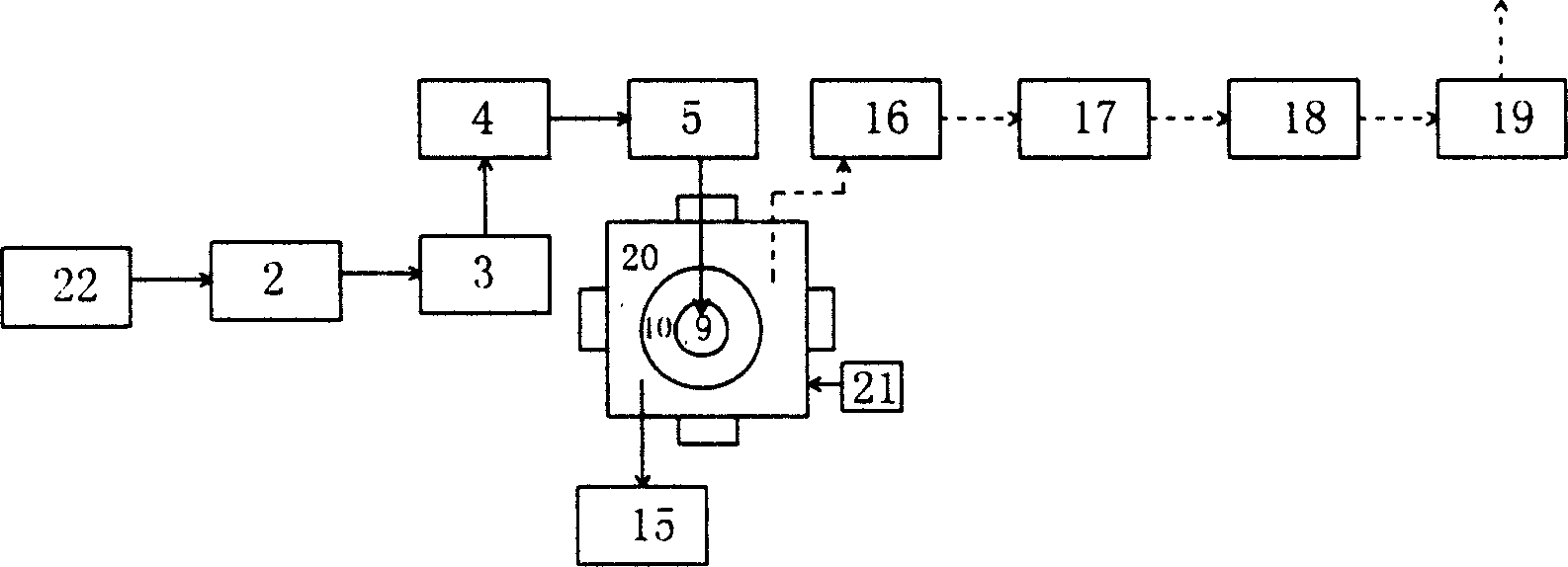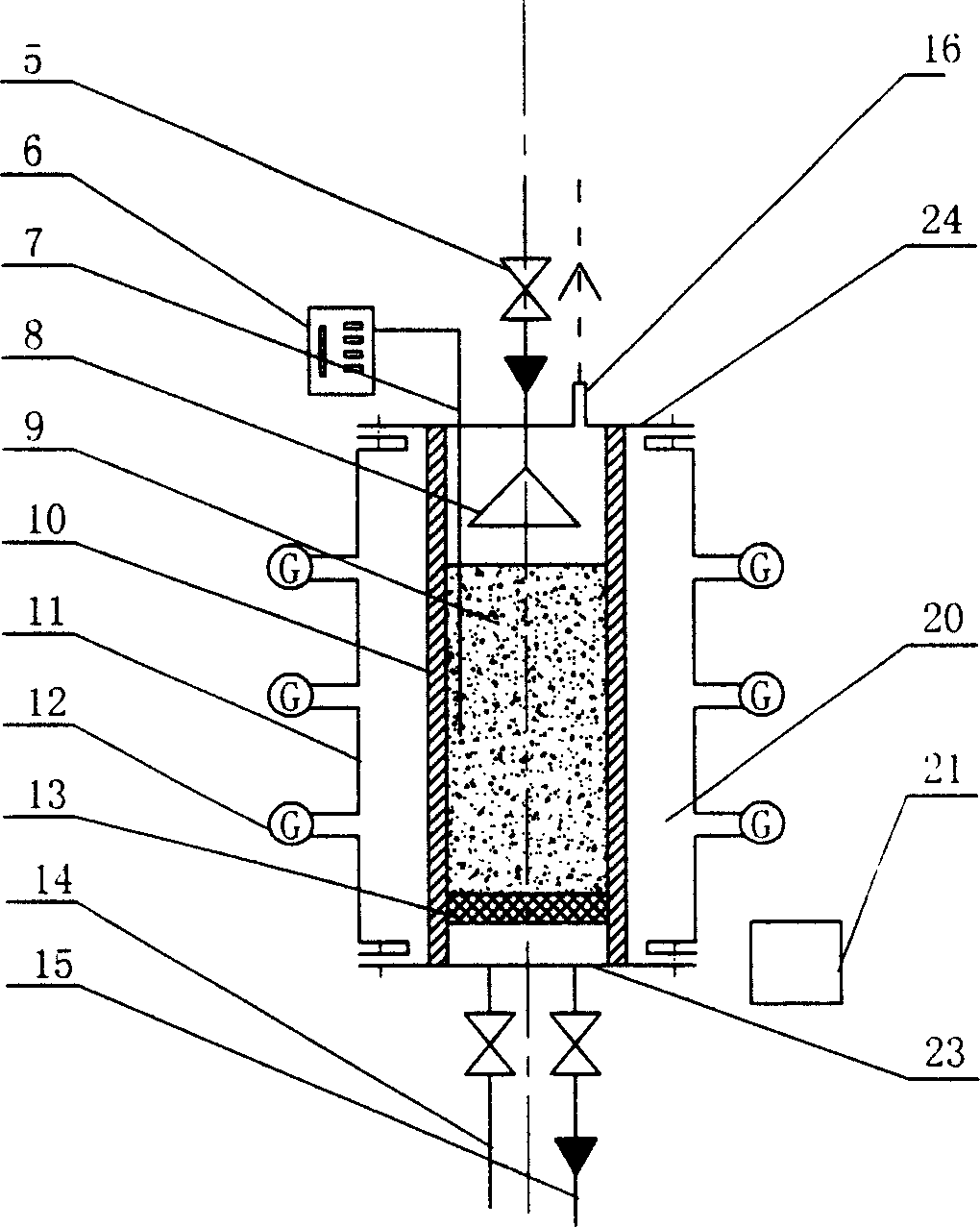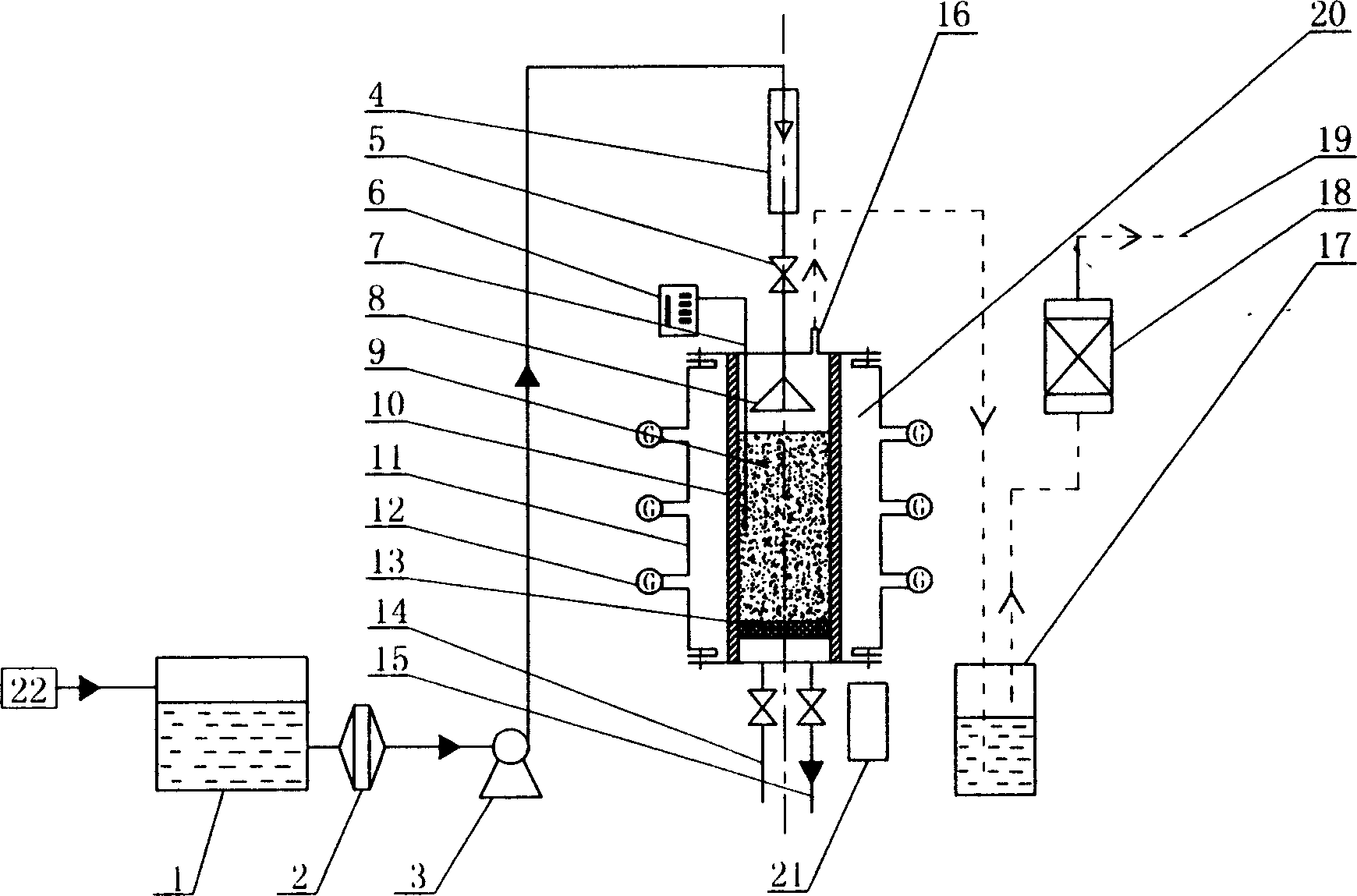Restoring method of activated carbon for decomposing, processing and adsorbing organic substance in waste water through microwave irradiation
A technology of microwave irradiation and decomposition treatment, applied in the field of water treatment, can solve the problems of inability to achieve in-situ regeneration, long regeneration time, secondary air pollution, etc., and achieves fast heating speed, small space occupation, and regeneration efficiency. high effect
- Summary
- Abstract
- Description
- Claims
- Application Information
AI Technical Summary
Problems solved by technology
Method used
Image
Examples
Embodiment 1
[0038] Using a microwave irradiation regeneration device to regenerate simulated high-concentration pentachlorophenol wastewater and activated carbon
[0039] Traditional pentachlorophenol treatment methods such as biological methods, chemical oxidation methods, and metal reduction methods have problems such as long processing time and low processing efficiency. Select commercially available chemically pure pentachlorophenol solid powder and add alkali to prepare simulated wastewater with a concentration of 2000mg / L. It is required that the effluent concentration after treatment should be lower than 200mg / L, and the adsorption capacity of activated carbon should be restored to more than 80% of its initial value. The microwave irradiation regeneration device in the invention is placed in the production process line, and the activated carbon adsorption / microwave irradiation regeneration test is carried out. The steps are:
[0040] The first step is to charge the material. The re...
Embodiment 2
[0046] Using two parallel microwave irradiation regeneration devices to treat the production wastewater of Dalian ×× Pesticide Factory
[0047] This is a ××× pesticide factory with an annual output of ×× million tons. The amount of pesticide synthesis wastewater is 10 tons per day, and the COD of wastewater is 4000-10000mg / L. In the past, it was treated by incineration, which caused high treatment costs and secondary pollution. Adopt two microwave irradiation regeneration devices [20] installed side by side in the present invention to carry out activated carbon adsorption / microwave irradiation regeneration test, the steps are as follows:
[0048] The first step is wastewater sampling and analysis. The wastewater retrieved from Dalian XX Pesticide Factory has no impurities in the water and is relatively transparent. The COD of wastewater is 6784mg / L;
[0049] The second step, charging, the activated carbon in the quartz reactor [10] of two sets of microwave irradiation regenera...
Embodiment 3
[0054] Ex situ regeneration of waste activated carbon after tertiary treatment in sewage treatment plant
[0055] Waste activated carbon obtained from a sewage treatment plant in Dalian after tertiary treatment is regenerated in situ by using the process of the present invention and a microwave irradiation regeneration device. The specific operation steps are as follows:
[0056] The first step, incoming material sampling analysis: the activated carbon is coal-based granular activated carbon, and its average particle size is 2mm. Dry the activated carbon first, and measure its iodine value and specific surface area, which are 334.18mg / g and 284.6m 2 / g;
[0057] The second step, charging: open the resonant cavity loam cake [24] of microwave irradiation regeneration device [20], be 15 centimetres, the quartz reactor [10] that height is 120 centimeters in inner diameter, load the waste activated carbon of drying 2.5 kg, the filling height of activated carbon is about 50 cm, t...
PUM
| Property | Measurement | Unit |
|---|---|---|
| Specific surface area | aaaaa | aaaaa |
| Total specific surface area | aaaaa | aaaaa |
| Average particle size | aaaaa | aaaaa |
Abstract
Description
Claims
Application Information
 Login to View More
Login to View More - R&D
- Intellectual Property
- Life Sciences
- Materials
- Tech Scout
- Unparalleled Data Quality
- Higher Quality Content
- 60% Fewer Hallucinations
Browse by: Latest US Patents, China's latest patents, Technical Efficacy Thesaurus, Application Domain, Technology Topic, Popular Technical Reports.
© 2025 PatSnap. All rights reserved.Legal|Privacy policy|Modern Slavery Act Transparency Statement|Sitemap|About US| Contact US: help@patsnap.com



